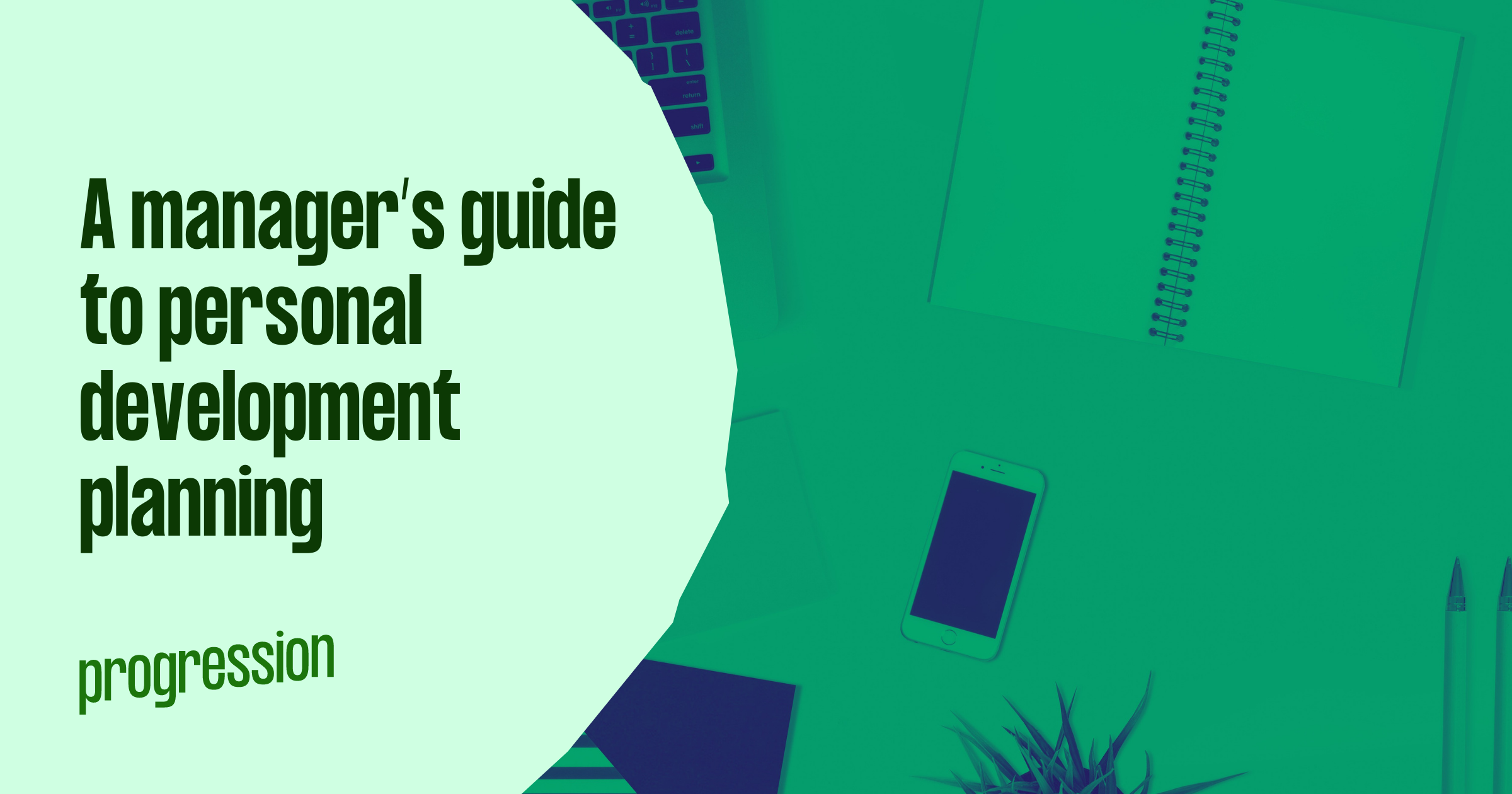As a manager, it's your job to support your employees so they can perform their duties to the best of their abilities. But it doesn't stop there. Even if they're all excelling in their current roles (and maybe especially if that's the case), you also have to think about how to keep them fulfilled and engaged, so that they don't jump ship to another company.
A great way to do this is to make it clear to your team you care about their future, as well as their current level of performance. Help them see the opportunities that your company can provide them and the steps they need to take to advance. This can be achieved by putting together a personal development plan with each team member, so that they have a clear idea of what their career path with the company can look like.
What is a personal development plan?
A personal development plan, or PDP, is a document or file laying out a person’s career goals. As well as defining where they would like to get to in their career (for example, managing a team), it also lists all the skills and experience they will need to get there.
Some people create this plan for themselves, while some work with their managers to put this together.
Personal development plan for managers
As a manager, building a personal development plan with your employees is a great idea. This can take on many different forms - from an excel spreadsheet, to a dedicated programme like Progression.
Whichever way you choose, putting the plan together will take time and will require both you and your team members to engage with the process. You will need to consider where your company is at the moment and what kind of opportunities you can offer your employees. Your team members will need to honestly and accurately assess their current skills and recognise where they might need further training.
What are the best questions to ask in a personal development plan meeting?
While being open and flexible when talking to your employees is important, it’s also good to have a plan when going into important meetings. As you prepare to discuss a team member’s personal development plan, have some questions ready that would be useful for you in offering support.
These can be different things, like:
- What do you enjoy most about your role?
- What aspects of the job are less interesting to you?
- Are there any specific areas you would like to improve or train in?
- Is this job what you expected it to be when you started? If not, how so?
- Is there anyone in the company you would be interested in learning from?
- Are there any different parts of the organisation you would like to know more about?
- What projects would you like to work on or be more involved in?
- What has been your professional and personal highlight this month?
- What do you most enjoy doing outside of work?
- Do you have any suggestions for how I can best support your career progression?
What are the stages of development planning?
A good professional development plan can’t be created in a hurry. Take the time to complete the different stages with your team:
- Self reflection. Every journey needs a starting point. By assessing where your employee currently is in their career, you can help them plan the next step. Make a list of their current duties and responsibilities, and the skills these require to excel. They will need to do some inward-gazing and be honest about what skills they are confident they already have a good grasp on, and which they need help mastering. Additionally, they should list the things they’re passionate about, what they most enjoy about their current role, what they least enjoy and what transferable skills they have (this is especially important if they want to move to a different department or role).
- Goal setting. Now that you know where your team member is, it’s time to talk about where they want to go. Everyone dreads the -’where do you see yourself in 5 years?’ question at job interviews, but this is the time to think about it and answer it honestly. It’s important to remember that climbing the career ladder doesn’t necessarily mean taking on a managerial position. Growing as an expert in a certain field can be just as fulfilling. Make sure to present all possible career paths to your team.
- Strategising. When you have a start and end point, you can see what you and your team members need to do to get from A to B. Do they need specific training? If they want to become a manager, you could maybe send them on a course to develop leadership skills. Remember that it’s not just external training that can help here - networking events, mentorship from within the organisation and time spent working with people from other departments can all be valuable resources.
- Resource list. When you’ve set out the exact steps your employee needs to take to advance, you’ll need to have a think on your own and decide how you can best support them. What courses do you have access to? Can you get a discount by sending several members of your team on the same course? What budget are you working with? You may need to seek advice from upper management or other parts of the organisation for this. You can also set them questions regarding supporting your team members from within your organisation with mentorship and secondments.
- Final timeline. We love it when a plan comes together! When you’ve collected all the information above, you can put it all together and create a personal development plan for your team members, including details of their current role, their future goals and the training and support needed to get from one of the other. Assigning deadlines for achieving certain goals can also be helpful, as it will provide some focus and an actionable course of action.
Naturally, this plan needn’t be set in stone. Plans and circumstances change, so it’s perfectly possible for your employees' life plans to change as well. A professional development plan is a dynamic thing that can grow with the person it’s attributed to.
Who is involved in a personal development plan?
In its core, putting together a personal development plan is a conversation between you and your employee. They need to be open and honest about their skills, competencies and goals, and you need to have a firm idea of what you can do to support their advancement.
However, other people within the organisation will also likely need to be involved in the process. If you are not the main decision maker in the company, you should talk to upper management about future hiring plans, so that you can be upfront with your team about what opportunities the company will be able to offer them. Promising things you can’t deliver is the worst thing you can do in terms of keeping your employees’ trust.
Depending on the size of your company, Learning and Development, HR or the finance department will need to be involved in decisions around training and development budgets, and possible secondment or mentoring programmes within the organisation.
What factors should be considered when planning for personal development?
A good professional development plan considers the past, present and future. What skills has your team member gained so far in their career? What are they doing now and how well are they performing in their role? Where do they want to end up and what support do they need to get there?
You also need to consider where your company is in terms of growth, as this will impact the type of opportunities you are able to offer your employees. Your budget will likely determine the level of external training you can send them on.
Why are personal development skills important?
Nobody likes to feel like they are stuck. A personal development plan allows employees to imagine their future and how they might achieve their goals. The job market is a competitive place, and so staying ahead of the competition by topping up skills and growing professionally is important. It can help the team stay focused and motivated and benefit not just the individual employees, but the organisation as a whole as well.
What is the difference between PIP and PDP?
A PIP, or performance improvement plan, is designed to resolve productivity issues for team members who are failing to meet expectations. This is usually put together by HR or the management team as a condition for keeping the team member employed in the company.
A PDP - personal development plan, is sometimes required by management as an assessment tool for the employee’s appraisal, but can also be created by the employee or their manager as a way of supporting professional growth and keeping the team engaged and motivated.
Essentially, the difference here is what sets performance management apart from career progression management.
What is the difference between PDP and CPD?
A CPD, which stands for Continuing Professional Development, is usually used to track ongoing development. So, noting and documenting things like training and skills gained both formally and informally in the workplace. This can be maintained in conjunction with a PDP, as that focuses on future goals and sets targets to get to them, while a CPD tracks the progress of this process.
You could technically incorporate the aspects of a CPD within your PDP, but this might make the plan a little cumbersome. Progression’s Check-ins and Wins are a great way to keep track of how your team members are doing on their way to their chosen career path in a centralised and accessible place.
How do you write a PDP?
There are a variety of tools you can use to create your personal development plan. You can make a list of steps in a Google or Word document, create a spreadsheet or even write it all down with a pen and paper.
If you’re after something a bit more structured, have a look at the tools we offer to help you put a career progression plan together for your employees (and yourself, if you fancy it!). We also have a library full of skills and templates to make building the plan quicker and easier.






